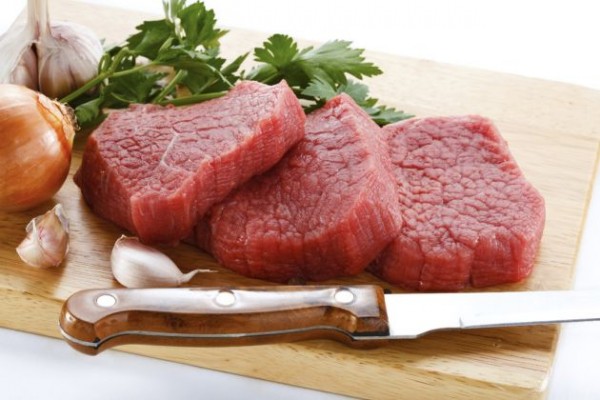Found in skeletal muscles, bone marrow, spleen, and the liver, ferritin is a protein that naturally binds to iron and is present in the blood in a very small amount. A test to find out the amount of ferritin in your blood gives an indication of how much iron you have stored in your body. Red blood cells need iron to deliver oxygen to cells. In the absence of enough iron, red blood cells fail to supply enough oxygen and you will feel tired and lethargic. However, it is also bad to have too much of iron in your body, and that is why having a level within ferritin normal range is essential, as this indicates the right balance of iron in your body.
How to Know Your Ferritin Level
Your doctor may order a ferritin blood test to find out how much ferritin is there in your bloodstream. He/she may also order other iron tests along with a ferritin test when your CBC test shows some abnormalities. You may have iron deficiency anemia if your CBC test shows that your hematocrit and hemoglobin are low and your red blood cells are paler and smaller than normal.
How Is This Test Performed?
A lab assistant will draw a small amount of blood to perform the ferritin test. He/shethen applies a band around your arm to make your veins pop a bit. Then, the assistant inserts a needle and draws out a small amount of blood for testing. Sometimes, you need to avoid eating for at least 12 hours before giving your blood sample. It usually offers accurate results when you have your ferritin test performed on an empty stomach in the morning.
Ferritin Normal Range
The normal range usually varies from lab to lab, so you usually get a reference range only to know what is normal. Your test report will have a range mentioned on it, so that your doctor can refer to it while making a diagnosis. Here is what is usually considered a ferritin normal range:
|
|
Ferritin Range in Nanograms per Milliliter (ng/mL) |
|
Men |
18 to 270 |
|
Women |
18 to 160 |
|
Children |
7 to 140 |
|
Babies 1-5 months |
50 to 200 |
|
Newborns |
25 to 200 |
Low Ferritin Level
If you are iron deficient, your test result will be lower than the ferritin normal range. The number of your red blood cells will come down or you may develop iron deficiency anemia when you do not have enough iron in your body. This can happen due to many reasons. For instance:
- You may have experienced chronic blood loss from pregnancy or heavy menstrual bleeding.
- You may not have enough iron in your diet.
- You may have bleeding inside your intestinal tract due to colon polyps, ulcers, hemorrhoids, etc.
- You may have psoriasis (it makes iron go out of your body through the skin or the urine).
How to Increase Your Ferritin Levels to a Normal Range
If your ferritin levels are lower than normal, you can try certain remedies for it. For instance:
 Eat lean meat: What you eat contains two types of iron – heme and nonheme. Increase your intake of heme iron to boost ferritin quickly. It is found in poultry, meat, and fish. Some impressive sources of iron are oysters, liver, and clams. Liver is rich in iron but is high in cholesterol too, so eat in moderation. Lean red meat is also a good choice because you get up to 3mg of iron from a 3-ounce serving of beef. You will get 1mg of iron from the same portion of chicken breast, pork chops, canned tuna, shrimp, and canned salmon.
Eat lean meat: What you eat contains two types of iron – heme and nonheme. Increase your intake of heme iron to boost ferritin quickly. It is found in poultry, meat, and fish. Some impressive sources of iron are oysters, liver, and clams. Liver is rich in iron but is high in cholesterol too, so eat in moderation. Lean red meat is also a good choice because you get up to 3mg of iron from a 3-ounce serving of beef. You will get 1mg of iron from the same portion of chicken breast, pork chops, canned tuna, shrimp, and canned salmon. Get it from plant sources: Plant-based sources of iron can help, but they contain nonheme iron that your body absorbs slowly. It still helps to eat broccoli, spinach, and baked potatoes to increase your ferritin levels. You will get 1mg of iron from half cup of broccoli and half cup of cooked spinach. Add an ounce of pumpkin seed to the mix to get an additional 4mg of iron. Half cup of raisins or ted dried apricots provide you about 2mg of iron, whereas one-half cup of lentils, cooked beans, or soybeans offer 2-4mg of iron.
Get it from plant sources: Plant-based sources of iron can help, but they contain nonheme iron that your body absorbs slowly. It still helps to eat broccoli, spinach, and baked potatoes to increase your ferritin levels. You will get 1mg of iron from half cup of broccoli and half cup of cooked spinach. Add an ounce of pumpkin seed to the mix to get an additional 4mg of iron. Half cup of raisins or ted dried apricots provide you about 2mg of iron, whereas one-half cup of lentils, cooked beans, or soybeans offer 2-4mg of iron. Enhance iron absorption: Increasing your iron intake is not enough; you also need to improve its absorption in the body. For this, you need to increase your vitamin C intake. Vitamin C can improve absorption of nonheme iron and help you increase your ferritin levels by eating vegetables. You can always opt for Brussels sprouts, sweet pepper, sweet potatoes, or broccoli to get more of vitamin C. Drinking tomato or orange juice will also make a difference. Mixing heme-containing meat and nonheme vegetables will also improve iron absorption in the body. Avoid coffee, dairy products, milk, and tea because they may inhibit absorption of nonheme iron.
Enhance iron absorption: Increasing your iron intake is not enough; you also need to improve its absorption in the body. For this, you need to increase your vitamin C intake. Vitamin C can improve absorption of nonheme iron and help you increase your ferritin levels by eating vegetables. You can always opt for Brussels sprouts, sweet pepper, sweet potatoes, or broccoli to get more of vitamin C. Drinking tomato or orange juice will also make a difference. Mixing heme-containing meat and nonheme vegetables will also improve iron absorption in the body. Avoid coffee, dairy products, milk, and tea because they may inhibit absorption of nonheme iron.
High Ferritin Level
It is also possible to have your test results higher than ferritin normal range. It may indicate certain health conditions, such as hemochromatosis, in which your body absorbs too much of iron. Many other conditions may also cause high iron levels, such as hyperthyroidism, liver disease, rheumatoid arthritis, type-2 diabetes, adult Still's disease, iron poisoning, leukemia, and Hodgkin's lymphoma.
It is worth mentioning that your ferritin levels will go up when your body experiences inflammation. That is why people with liver disease or any type of cancer may have their ferritin levels on the higher side. Research shows that people who are obese or drink alcohol regularly may also have their ferritin levels elevated.
Usually when there is too much iron in your blood, phlebotomy is the procedure used to reduce the amount of iron by withdrawing blood from veins in arms.
